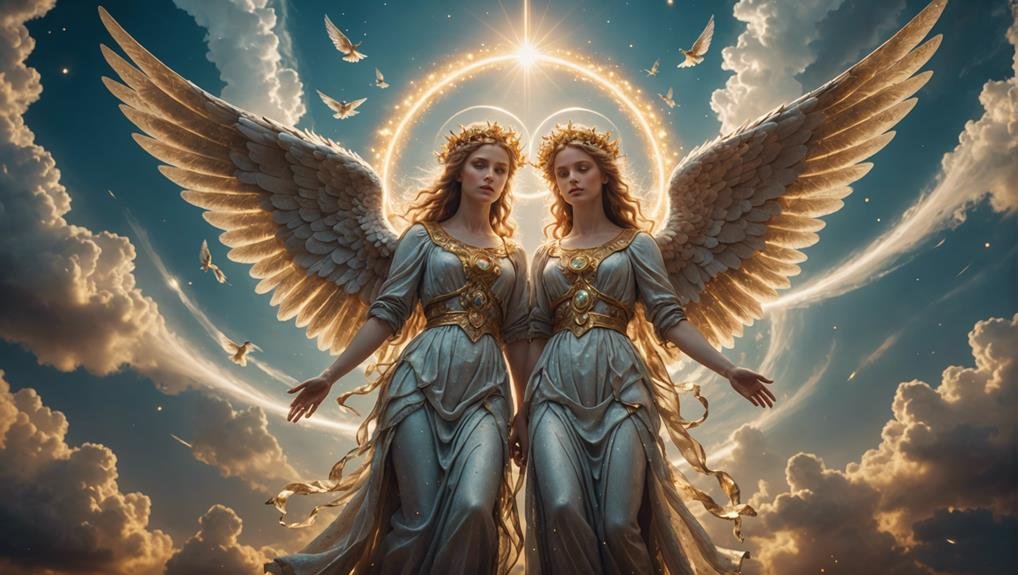When you explore Ezekiel Biblical Angels of the Cherubim, you’ll encounter a complex and intriguing portrayal of divine beings with four faces and four wings, accompanied by wheels that move in any direction.
This vision isn’t just notable for its imagery and rich symbolism—highlighting divine movement, control, and presence. The faces, wheels, and eyes all carry deep theological implications that have shaped Christian thought for centuries.
As you consider the significance of these elements, you’ll find there’s more to uncover about their influence on our understanding of heavenly beings and God’s attributes.
Key Takeaways
- Ezekiel’s vision features cherubim with four faces (man, lion, ox, eagle) and four wings.
- Cherubim in Ezekiel 10 is closely associated with divine presence and movement.
- The wheels beside the cherubim symbolize God’s omnipresence, omniscience, and guidance.
- Eyes on the cherubim and wheels signify divine awareness and vigilance.
- Ezekiel’s cherubim has significantly influenced Christian depictions of angelic beings and heavenly hierarchies.
Vision of the Cherubim
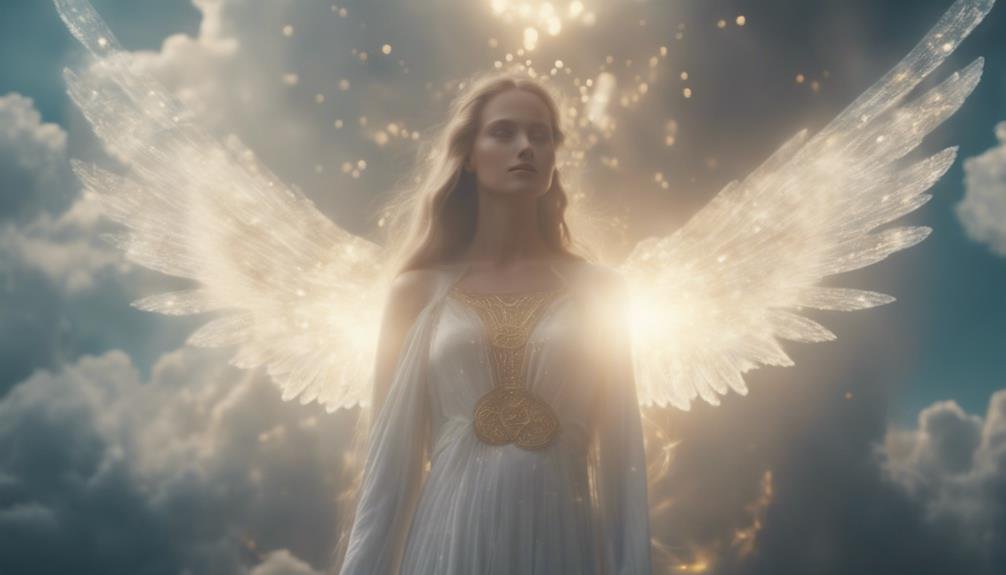
Ezekiel’s exploration of the Cherubim in chapter 10 presents a vivid and symbolic depiction of these heavenly beings. These Cherubim, often referred to as living beings, are described with intricate detail.
Each Cherub has four faces and four wings, showcasing its otherworldly nature and connection to the divine. The vision also includes wheels beside each Cherub, which can move in any direction without turning, symbolizing the divine will’s seamless and omnidirectional movement.
As you investigate Ezekiel 10 further, you’ll notice the Cherubim rising into the air along with the wheels, representing the dynamic and alive essence of these living beings. This ascent isn’t just a simple action; it symbolizes divine movement and the presence of God’s glory.
The Glory of the LORD is seen departing from the Temple to the East Gate, marking a significant moment in the vision. Ezekiel 10:1-22 provides a detailed account of these actions, emphasizing the intricate relationship between the Cherubim and the divine.
When you read this passage, you’ll gain a deeper understanding of the symbolism and significance of these heavenly beings in Ezekiel’s vision.
The Four Faces
In Ezekiel’s vision, the cherubim’s four faces—a man, lion, ox, and eagle—each symbolize distinct aspects of God’s creation and attributes. The face of a man represents humanity, emphasizing intelligence and reason.
The lion’s face signifies strength and majesty, embodying the kingly power of God.
The ox, known for its service and endurance, highlights the importance of diligence and patience in God’s creation. Finally, the eagle’s face captures swiftness and vision, pointing to God’s far-reaching oversight and the ability to act swiftly.
These four faces represent the unity and diversity of God’s creation. Each face illustrates a unique characteristic that, when combined, gives a fuller picture of divine attributes.
The man, lion, ox, and eagle aren’t just individual symbols; they collectively show how varied aspects of creation reflect God’s multifaceted nature.
The Wheels Within Wheels
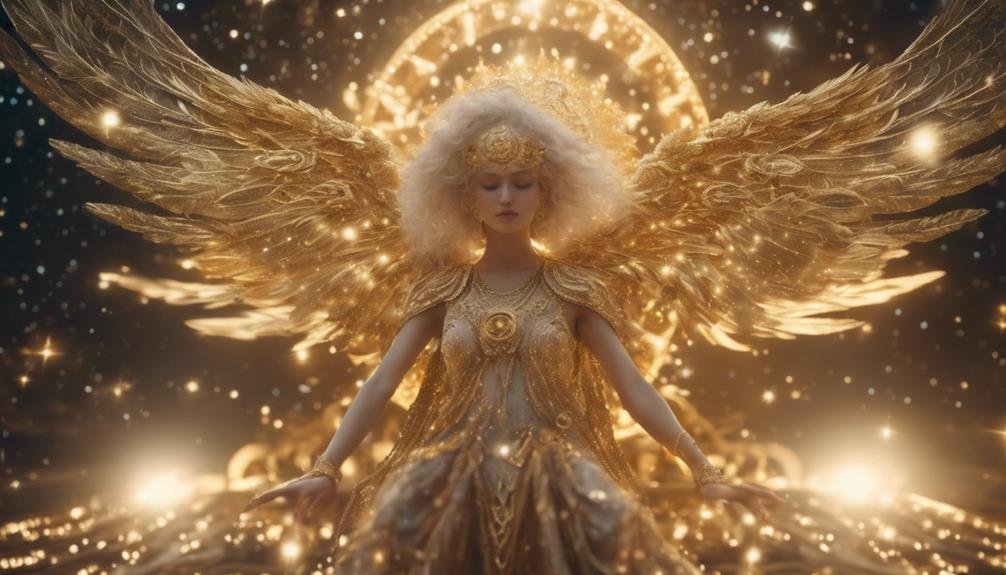
Frequently depicted in Ezekiel’s vision, the wheels within wheels beside the cherubim symbolize divine awareness and guidance through their multitude of eyes. These wheels aren’t just ordinary objects; they represent the profound and intricate nature of God’s providence.
By being full of eyes, they embody the omniscience and vigilance of the divine, always watching and directing. When you look closer at these wheels within wheels, several key elements stand out:
- Divine Movement: The wheels are directly tied to the movement and direction of the cherubim angels.
- Symbolism of Control: They underscore God’s ultimate control over the universe.
- Complex Design: The intricate structure of the wheels within wheels highlights the mysterious and detailed nature of God’s workings.
- Guidance: The presence of these wheels reassures believers of divine guidance and presence.
The imagery Ezekiel presents with the wheels within wheels is a powerful reminder of the divine orchestration in all things. These wheels move in perfect harmony with the cherubim, signifying that nothing occurs outside God’s watchful gaze and sovereign will. Understanding this can deepen your appreciation for the depth and complexity of biblical symbolism.
Eyes All Over
When you envision the cherubim and wheels with eyes all over, you’re reminded of God’s ever-watchful presence and divine awareness. In Ezekiel’s vision, the cherubim and wheels are described as having eyes covering their entire bodies, backs, hands, and wings.
This striking imagery of eyes all around serves to highlight the omnipresence and omniscience of God. The eyes symbolize God’s all-seeing nature, ensuring nothing escapes His vigilant gaze.
The emphasis on eyes all over signifies God’s constant vigilance, protection, and involvement in all aspects of existence. Whether it’s the smallest detail in your life or the grandest events in the universe, God’s watchful care is always present, guiding and safeguarding you.
| Divine Attribute | Symbolized by Eyes | Emotional Impact |
|---|---|---|
| Omnipresence | Eyes all around | Comfort |
| Omniscience | Eyes everywhere | Awe |
| Protection | Eyes on every surface | Security |
| Guidance | Eyes on all parts | Assurance |
| Sovereignty | Eyes all over | Reverence |
The presence of eyes all around is a powerful reminder of God’s watchful care and control over the world, reinforcing His sovereignty and the intimate attention He provides to each aspect of creation.
Symbolism of the Eyes
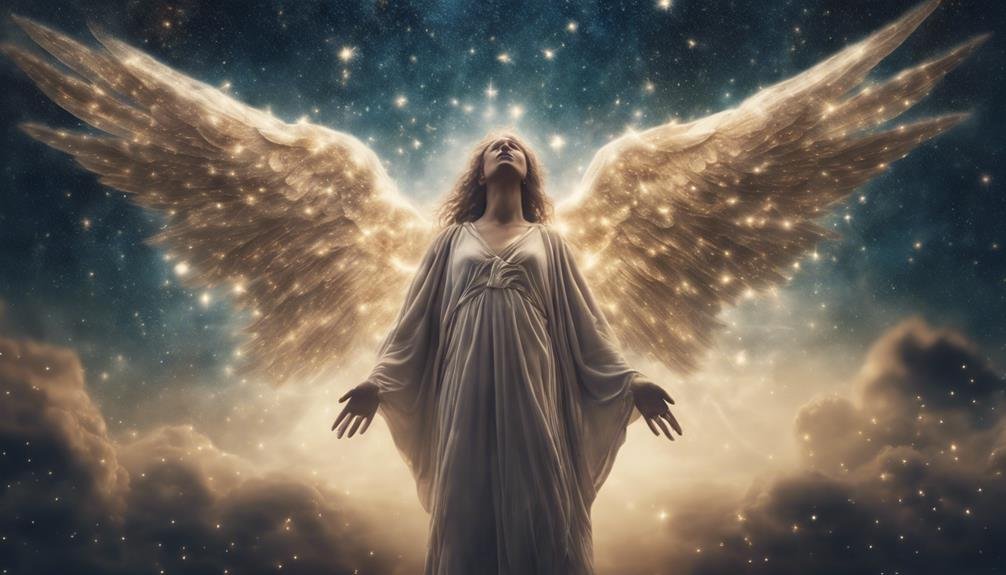
The eyes on the cherubim vividly symbolize God’s omnipresence and omniscience, making them more than just a striking visual; they’re a profound representation of His divine attributes.
In Ezekiel’s vision, the eyes aren’t randomly placed but are intentionally depicted on the cherubim’s bodies, backs, hands, wings, and wheels. This placement emphasizes God’s all-seeing nature, illustrating that nothing escapes His notice.
These eyes convey several key aspects of God’s character:
- Divine Awareness: The sheer number of eyes underscores that God is aware of everything occurring in His creation.
- Omnipresence: Eyes everywhere signify that God is present in all places at all times.
- Omniscience: Eyes on the cherubim highlight that God’s knowledge is complete and perfect.
- Guidance and Care: The constant vigilance symbolized by the eyes reflects God’s watchful care and guidance over His people.
In essence, the eyes in Ezekiel’s vision are more than mere symbols; they’re powerful reminders of God’s sovereignty and His intimate involvement in the world.
These eyes represent spiritual insight and the divine presence, assuring you that God sees all and is always with you.
Cherubim’s Role and Function
As powerful celestial beings, cherubim serve as guardians of sacred spaces and intermediaries between humanity and the divine. In the Bible, they’re depicted with multiple faces and wings, embodying their complex and multifaceted nature.
You can visualize them as the four living creatures described in Ezekiel’s vision, each with four faces representing a man, lion, ox, and eagle. These features symbolize their wisdom, strength, and divine knowledge.
Cherubim are tasked with protecting the sanctity of God’s presence. Remember the cherubim stationed at the entrance of the Garden of Eden, wielding a flaming sword to prevent reentry? That illustrates their role as divine protectors.
They also appear in the inner sanctum of the Tabernacle and Solomon’s Temple, emphasizing their function as bearers of God’s glory and executors of His will.
Their intermediary role is essential, acting as conduits between the divine domain and humanity. They deliver messages and divine instructions, ensuring that God’s plans are understood and carried out.
Cherubim embody the mysteries of God’s will, making them vital in the divine hierarchy. Their presence underscores the profound connection between the heavenly and earthly domains.
Divine Presence and Watchfulness

Cherubim in Ezekiel’s vision vividly illustrate God’s divine presence and watchfulness through their multitude of eyes. These eyes cover their entire bodies, backs, hands, and wings, emphasizing God’s all-seeing nature.
This symbolic imagery powerfully conveys the message that nothing escapes God’s awareness and vigilance. In Ezekiel’s vision, the eyes also appear on the wheels that accompany the cherubim, signifying divine guidance and control over every direction and movement.
When you contemplate these details, several key points stand out:
- Divine Awareness: The multitude of eyes represents God’s constant vigilance and awareness of all things.
- Spiritual Insight: The eyes symbolize spiritual insight and the profound knowledge that God possesses.
- Guidance and Control: Eyes on the wheels illustrate God’s guidance and control over the universe’s movements.
- Presence and Vigilance: The pervasive presence of eyes underscores God’s watchfulness and involvement in every aspect of existence.
In Ezekiel’s vision, the presence of eyes on the cherubim serves as a powerful reminder of God’s divine attributes. This vision assures you that God’s presence is always with you, guiding and watching over every moment of your life.
Omnipresence and Omniscience
In Ezekiel’s vision, you witness a profound depiction of God’s omnipresence and omniscience through the symbol of eyes covering the cherubim and their surroundings. These eyes aren’t just for show; they represent God’s all-seeing nature.
When you see the cherubim full of eyes on their bodies, backs, hands, and wings, you understand that nothing escapes God’s notice. This imagery is powerful, illustrating that God’s awareness permeates every aspect of existence.
Moreover, the wheels within wheels, also full of eyes, emphasize divine guidance and control. They signify that God’s presence moves effortlessly throughout creation, directing and overseeing everything. You can’t miss the message: God’s knowledge and presence are boundless.
Ezekiel’s vision uses these symbolic eyes to convey deep spiritual truths about God’s attributes. By depicting the cherubim and the wheels as being full of eyes, the vision underscores God’s omnipresence and omniscience.
You get a vivid sense that God isn’t distant but actively involved in all things, seeing and knowing everything. This symbolism reassures you of God’s constant watchfulness and unwavering sovereignty over the universe.
Theological Implications
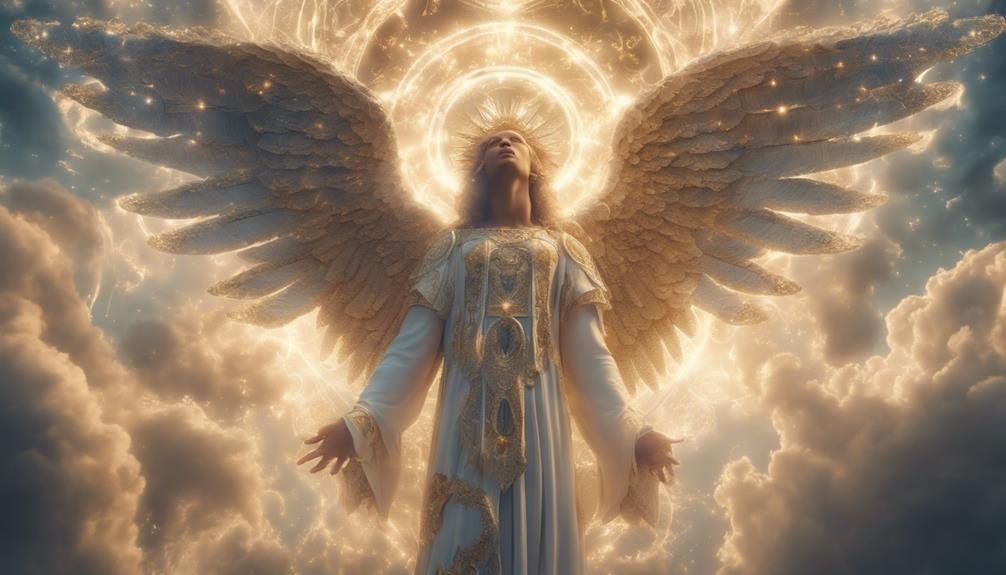
How does Ezekiel’s vision of the cherubim challenge and deepen your understanding of God’s nature? This vision emphasizes God’s omnipotence, omniscience, and sovereignty.
The cherubim, with their multitude of eyes and wheels, symbolize divine awareness and control over all creation. This imagery makes you rethink how intimately God is involved in every aspect of existence.
- Omnipotence: The cherubim’s powerful presence reflects God’s supreme power.
- Omniscience: Eyes on the cherubim and wheels signify God’s all-seeing nature.
- Sovereignty: The wheels indicate God’s control over movement and direction.
- Immanence and Transcendence: Through symbolic language, God is shown as both beyond and within the world.
The eyes on the cherubim’s bodies and wheels aren’t just decorative; they signify constant vigilance, guidance, and protection. You realize that God isn’t distant but actively involved in guiding and supporting you.
The wheels, in particular, remind you that God’s guidance is dynamic and ever-present, steering the course of events with precision.
This vision reveals a multifaceted portrayal of God, challenging you to see the divine as both immensely powerful and deeply personal, always watching, guiding, and protecting.
Influence on Christian Thought
Ezekiel’s vision of the Four Living Creatures has profoundly shaped Christian concepts of heavenly beings and apocalyptic symbolism.
These remarkable beings don’t just appear in Ezekiel but also in Revelation, where they continue to influence Christian thought on angelic hierarchies and end-times imagery. You’ll find that the Four Living Creatures are traditionally linked to the Four Evangelists: Matthew, Mark, Luke, and John.
This connection has left a lasting imprint on religious art and interpretations, enriching the visual and theological landscape of Christianity. The association with the highest ranks of angels, including archangels, further elevates their significance in Christian theology.
In Ezekiel, the cherubim’s connection to divine presence and God’s sovereignty deepens the understanding of these beings. They embody God’s omnipotence and eternal watchfulness, shaping how Christians conceive the divine order and heavenly guardianship.
Over centuries, Western Christianity has studied and contemplated the imagery of the Four Living Creatures. This ongoing reflection highlights their enduring influence on Christian thought, particularly in discussions about the nature of divine beings and the structure of the cosmos. Their impact is both profound and far-reaching.
Conclusion
In exploring Ezekiel’s vision of the Cherubim, you’ve investigated a rich tapestry of divine symbolism. The four faces, wheels, and omnipresent eyes all emphasize God’s sovereign control and watchfulness.
This vision not only deepens your understanding of heavenly beings but also enriches your grasp of God’s omnipresence and omniscience. By reflecting on these powerful symbols, you’ll find a greater appreciation for the profound theological insights that shape Christian thought and faith.
Related Articles:
Spiritual Warfare Prayers: Arm Yourself with God’s Armor
Palm Sunday: 3 Key Biblical Events Unveiled
Biblical Meaning of Solar Eclipse: Interpreting the Heavenly Signs
